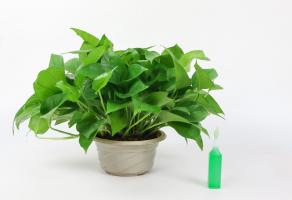What to Plant Next to Cucumbers: Tips for Companion Planting
Introduction
Cucumbers are a popular vegetable for home gardeners due to their versatility and ease of cultivation. However, planting cucumbers all by themselves in your garden may not be the most effective way to cultivate them. Companion planting is a gardening technique that involves grouping together certain plants that can benefit each other in some way. In this article, we will discuss what to plant next to cucumbers to improve their growth, control pests, and increase yields.
Companion Plants for Cucumbers
Companion planting is all about choosing the right plants to grow together. Here are a few options that work well with cucumbers:
1. Tomatoes: Cucumbers and tomatoes make great companions, as they have similar growing requirements and are resistant to many of the same pests and diseases. Plus, tomato plants can help provide shade to the cucumber plants during the hottest parts of the day.
2. Radishes: Planting radishes near cucumbers can help repel cucumber beetles, which are a common pest that can damage your crop. Radishes will also emit a scent that can attract bees to your garden, which can help pollinate your cucumber plants.
3. Corn: Corn is a tall plant that can provide shade to your cucumber plants. Plus, the dense foliage of corn can help prevent weeds from growing, which can save you some time in the garden.
Plants to Avoid Planting Near Cucumbers
While some plants can benefit cucumbers, others can have a negative impact. Here are a few plants that you should avoid planting near your cucumber plants:
1. Aromatic herbs: Plants like mint, sage, and dill can repel the bees that are essential for pollinating your cucumber flowers.
2. Potatoes: Cucumbers and potatoes are both members of the nightshade family, which can make them susceptible to the same diseases and pests. Planting them together can increase the risk of these issues arising.
3. Melons: While it may seem logical to plant cucumbers and melons together, doing so can actually increase the risk of powdery mildew. This is because both plants are susceptible to the disease, and planting them together can create an ideal breeding ground for it to thrive.
Tips for Success with Companion Planting
Here are a few additional tips for successful companion planting with cucumbers:
1. Plan ahead: Knowing what to plant next to cucumbers is just the first step. You will also need to plan out your garden to ensure that each plant has enough space and resources to grow properly.
2. Rotate your crops: To prevent soil-borne diseases from taking hold in your garden, it鈥檚 important to rotate your crops each year. This means planting cucumbers and their companions in different locations from one season to the next.
3. Stay vigilant: Companion planting can help reduce the risk of pests and diseases, but it doesn鈥檛 guarantee a pest-free garden. Stay on the lookout for any signs of trouble, and take action quickly if you notice any issues arising.
Conclusion
Companion planting is a valuable technique that can help improve the health and productivity of your cucumber plants. By choosing the right plants to grow together and avoiding certain pairings, you can create a thriving garden that produces delicious, healthy cucumbers for you to enjoy.

 how many times do yo...
how many times do yo... how many planted tre...
how many planted tre... how many pine trees ...
how many pine trees ... how many pecan trees...
how many pecan trees... how many plants comp...
how many plants comp... how many plants can ...
how many plants can ... how many plants and ...
how many plants and ... how many pepper plan...
how many pepper plan...
































